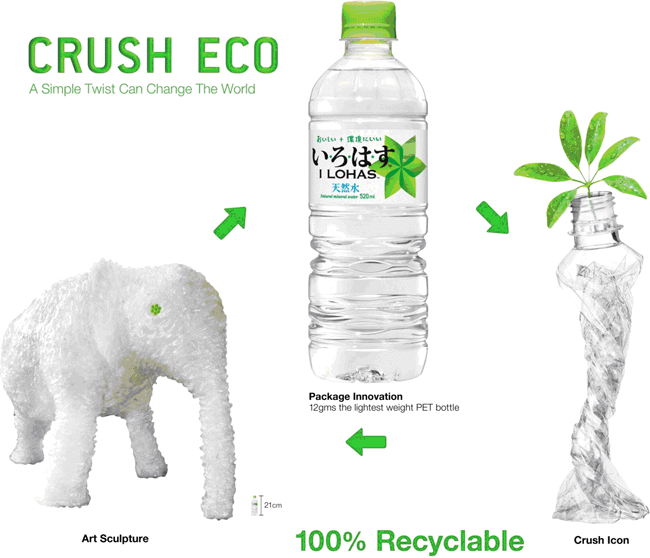WARC’s head of content David Tiltman looks back on the first year of the WARC Prize for Asia Strategy and the prescience of the thinking behind the first Grand Prix winning campaign.
Can this really be the 10th WARC Prize for Asian Strategy?
In some ways, that first Prize from 2011 seems like yesterday.
But as I sit in lockdown in London home-schooling two children who didn’t exist when we launched the Prize, maybe it does feel like another time!
We came up with the idea of the Prize in late 2010. Having worked in Asia for a few years, a few things had struck me.
There was growing confidence in Asian marketing – post-financial crisis, with London and New York in the doldrums, Asia was the place to be. There was some truly brilliant talent in the industry, including properly smart strategists – some imported into the region, others (a growing number) home-grown.
And there was a growing need for the ‘craft’ of strategy – the days of MNCs throwing a global campaign at agencies in the region with a brief of ‘make this Asian’ were numbered (at least among the better clients). It was perhaps the first-time big brands really pinned their growth agendas onto Asian markets – and for some, it was the first time they realised that Asia is, you know, pretty damn big, and incredibly diverse.
A recurring theme throughout the years of the Prize has been the power of strategy based on deep local insight, properly articulated. Inaugural Prize chairman Miles Young (then Chairman and CEO of Ogilvy Group; now safely ensconced as Warden of New College, Oxford) talked of strategy delivering differential growth – the overall market may be growing, but has the idea allowed you to outpace your competitors?
I’d always been a big fan of the APG Awards in London and the Jay Chiats in New York – and liked the way they shone a light on the sometimes-unsung work of strategy. Sure, there were effectiveness awards in Asia, but nothing that really celebrated the super-smart people in planning teams across the region.
As we wrote in the first entry kit:
In Asia, new markets and new consumers are demanding new insights. We want the Prize to act as a spur to strategic thinkers across the region. We want to create a body of evidence that will inspire them in the future, and to prove decisively that strategy is worth investing in.
So Ed Pank (WARC’s then newly installed Asia MD) and I did a few tours around the region, meeting strategists and floating the idea of a strategy award. The trips confirmed the gap in the market. They showed the need to focus on the individuals behind the campaigns (which we did by giving the winners actual money), the need to publish the winners and create that body of evidence, and the need to make barriers to entry low by avoiding expensive entry fees and black-tie galas (we didn’t charge for entries, and still don’t).
I also thought the trips would confirm that the acronym WPAS would really take off if we pronounced it Whoopass. Turned out I was wrong.
Looking back at that first round of the Prize, here’s a few things that strike me.
There’s not a lot of ‘purpose’
Looking at the shortlist from the vantage of 2020, one thing that stands out is how, um, normal it all is. There’re a few cases that sought to make the world a better place, but on the whole, it’s brands trying to find new ways to sell things – often using television. That said, there are a couple of ‘we started a movement’ campaigns (remember those?!) – this was, in hindsight, a time in which we were still learning about the opportunities and challenges of social channels, and advertising and PR were starting to come together.
There really was a campaign for an eco-friendly plastic bottle
The winning case, from Coca-Cola Japan, really stood out from the rest as a piece of strategic thinking, which was clearly articulated from objectives through to impressive results. It was a pack innovation backed by smart communications that reframed the I Lohas water brand in a crowded market. The key was presenting it as the eco-friendly choice – with a lightweight crushable bottle (meaningless use of plastic) and local sourcing (meaning fewer air miles).

Hindsight is a wonderful thing – although the bottle was fully recyclable, I genuinely couldn’t imagine a brand using a screwed-up piece of single-use plastic in an eco-focused campaign in 2020.
MNCs dominated – but not for long
The winners list then was dominated by MNCs – but I remember in the judging discussions a lot of talk about Asian brands starting to raise their game. We were seeing the rise of some seriously smart local players with big ambitions. The challenge in markets like India and China was unlocking growth outside the big Tier 1 and Tier 2 cities, where local players had an advantage. That shift has been evident ever since.
Back to 2020 – and a world looking at all sorts of uncertainty. I hope strategy will be more important than ever, as marketers try to discern a new normal for consumers and categories.
So, here’s to the next 10 years of Asian strategy – and the amazing thinking yet to happen.
This article is part of a special content programme marking the tenth anniversary of the WARC Prize for Asia Strategy. The 2020 edition is open for entries, with the deadline on 14 July. The Prize is free to enter and winning papers will share a prize fund of $10,000. For further information, visit the website or email warcprizeasia@warc.com.

